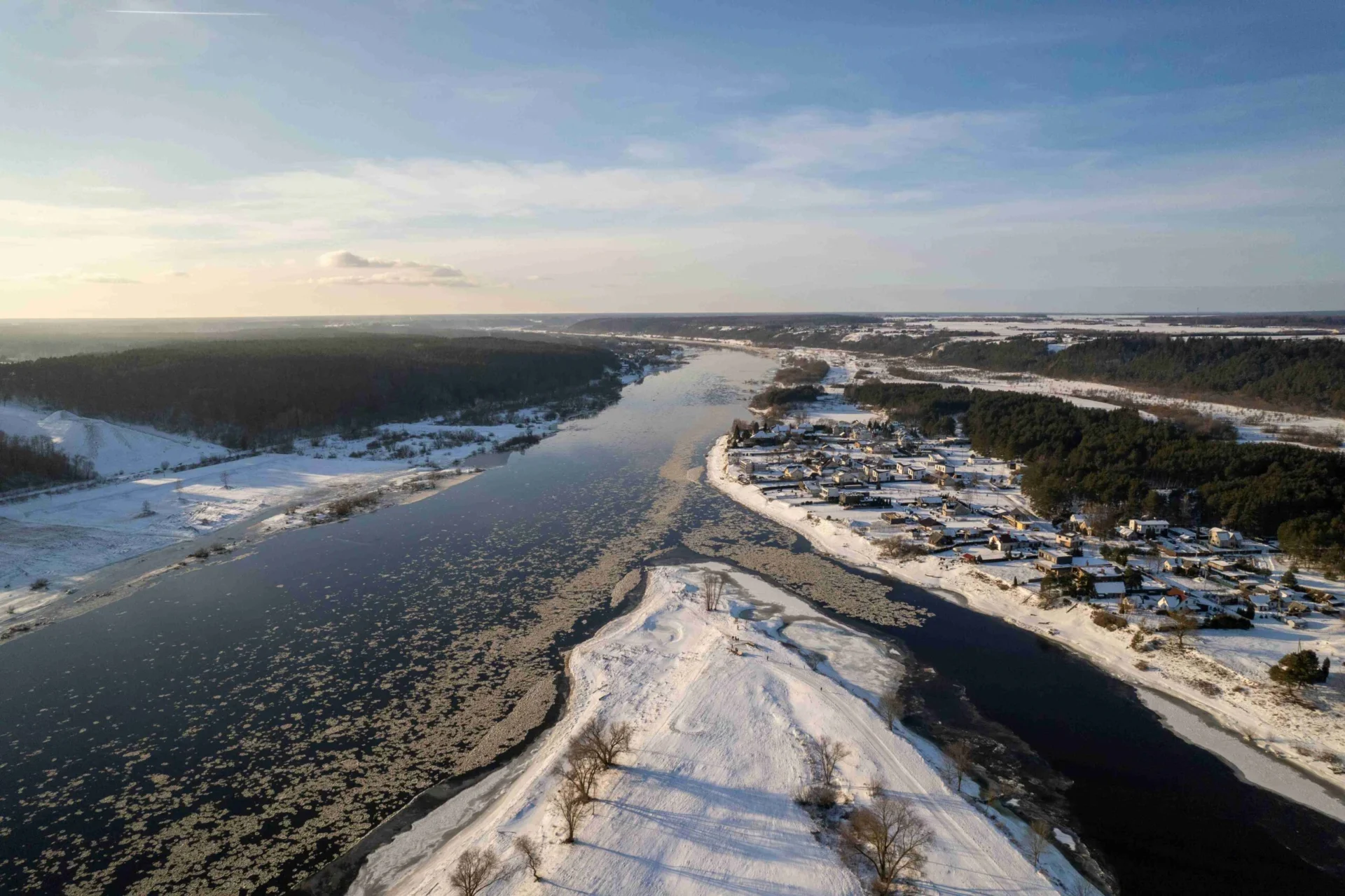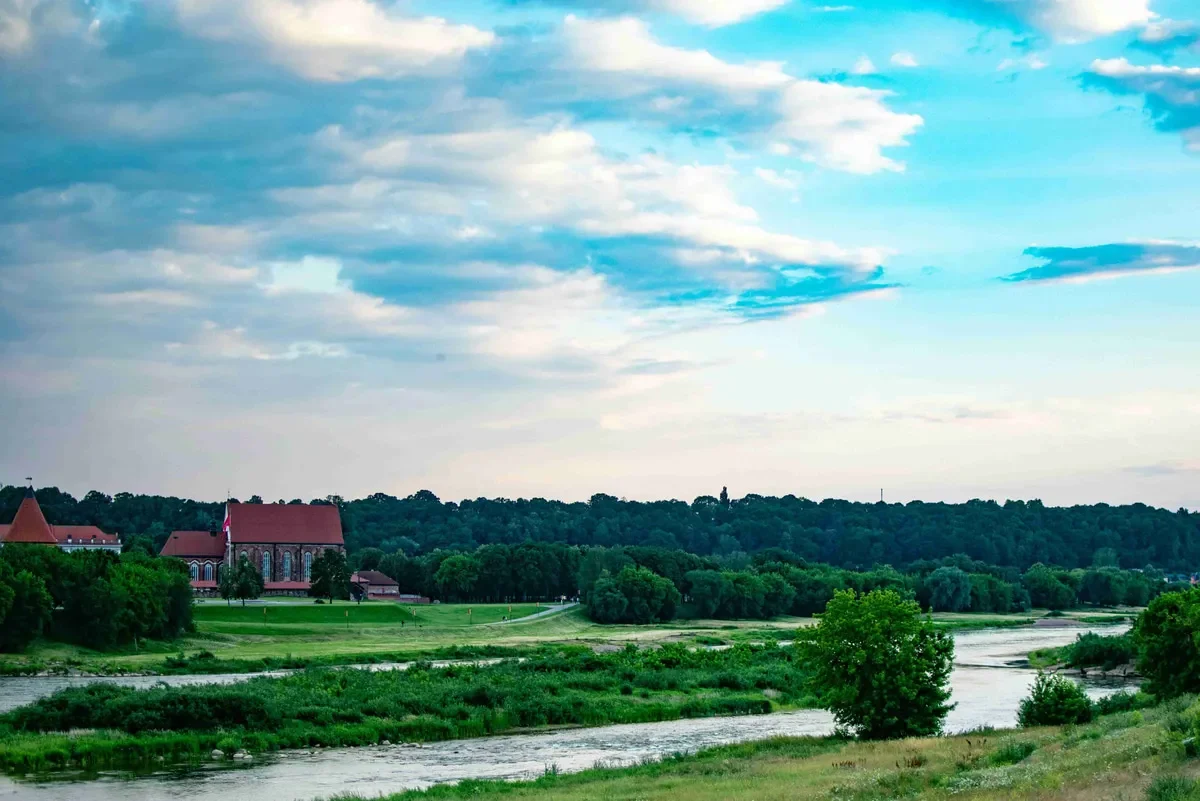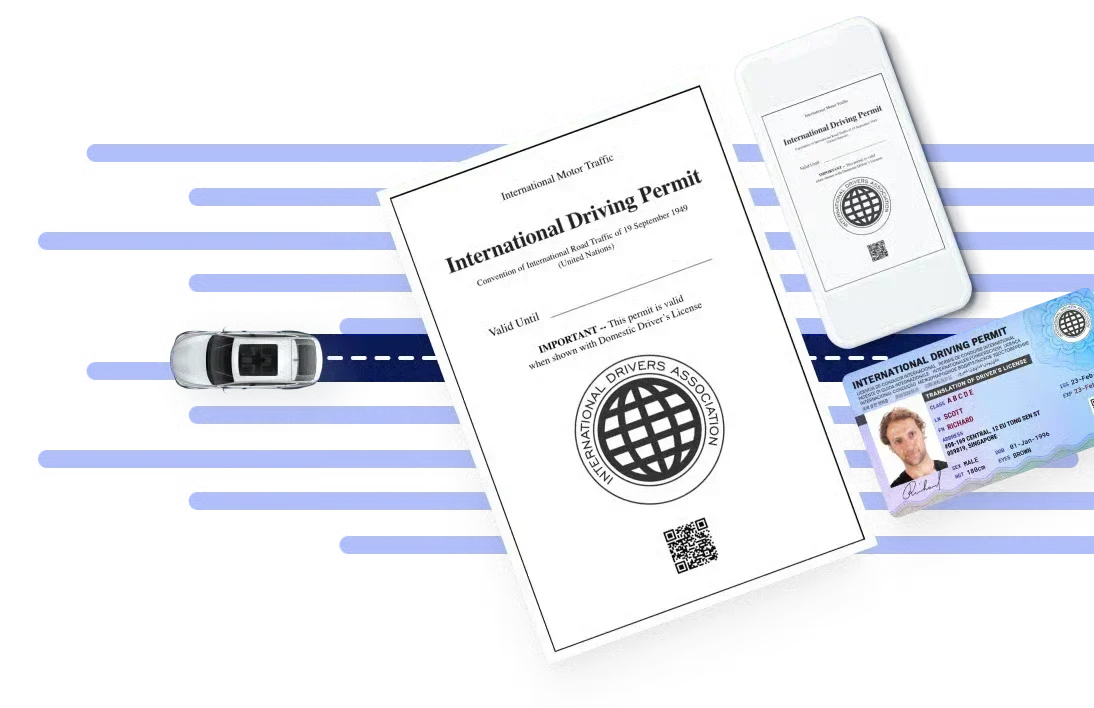Lithuania, a hidden gem in the Baltic region, is known for its rich history, stunning landscapes, and vibrant culture. From medieval castles to picturesque old towns, there’s much to explore in this small but captivating country. However, timing your visit can significantly enhance the experience. This guide provides an in-depth look at when to visit Lithuania, ensuring that every traveler can make the most of their trip.

Source: Photo by Marius Karotkis on Unsplash
Planning Your Trip to Lithuania
Before diving into the best times to visit Lithuania, you should consider some practical aspects of travel planning. One important requirement is obtaining an International Driving Permit (IDP) if you’re planning to drive . An IDP is recognized internationally and serves as a translation of your driver’s license. It can simplify interactions with local authorities and car rental companies.
Why an IDP is Necessary
- Legal Requirement: In many countries, including Lithuania, having an IDP is a legal requirement for driving.
- Language Barrier: An IDP translates your license into multiple languages, making it easier for officials to understand your credentials.
- Car Rentals: Most car rental companies require an IDP along with your regular driver’s license.
Obtaining an International Driving Permit (IDP) is simpler than most people think. The International Driver’s Association offers a quick process that takes just eight minutes. All you need to do is upload a copy of your driver’s license through this website , and the team will handle the creation of your digital IDP. If you’d like a physical version, you can also request to have it shipped to your address.
When is the Best Time to Go to Lithuania?
The ideal time to visit Lithuania largely depends on personal preferences regarding weather and activities. Generally, late spring through summer (May to August) is considered the best time for most travelers. During these months, temperatures are pleasant, and outdoor activities abound.
Seasonal Overview
- Spring (March to May): A beautiful time as nature awakens from winter. The landscape transforms with blooming flowers.
- Summer (June to August): Warm temperatures make it perfect for beach outings and festivals.
- Autumn (September to November): A stunning season with colorful foliage and fewer tourists.
- Winter (December to February): Cold but magical, especially around Christmas.
When is the Cheapest Time to Go to Lithuania?
For budget-conscious travelers, visiting during the shoulder seasons—late autumn (October-November) and early spring (March-April)—can be economical. Prices for accommodations and flights tend to be lower during these months.
Cost-Saving Tips
- Travel Off-Peak: Avoid peak summer months when prices soar.
- Book in Advance: Early bookings can secure better rates on flights and hotels.
- Look for Discounts: Many attractions offer discounts during off-peak seasons.
When is Peak Travel Season in Lithuania?
Peak travel season in Lithuania runs from late May to early September, drawing tourists to popular destinations like Vilnius, Kaunas, and the Baltic Sea coast. During this time, major attractions can be crowded, and prices for accommodations and flights are typically higher.
However, the season is also filled with vibrant cultural festivals and events that add to the country’s lively atmosphere, making it an exciting time to visit despite the larger crowds.
When is the Best Time to Visit the Lithuanian Castles?
Lithuania is home to several stunning castles , including Trakai Castle and Gediminas Tower. The best time to visit these historical sites is during late spring or early autumn when the weather is mild and crowds are thinner.
Ideal Visiting Times
- Late Spring (May): Perfect for enjoying blooming gardens around castles.
- Early Autumn (September): Offers beautiful fall colors as a backdrop for photography.
Monthly Breakdown of Weather and Activities
January
January in Lithuania brings cold temperatures averaging between -7°C and -3°C (19°F to 27°F). Snow covers the landscape, creating a winter wonderland perfect for those who enjoy winter sports or cozy indoor activities.
The cities are quieter during this month, allowing visitors to explore without the usual crowds. Many locals embrace winter by participating in outdoor activities such as ice skating on frozen lakes or skiing in nearby resorts.
Additionally, cultural experiences abound; museums and galleries provide warmth and insight into Lithuanian culture. Traditional foods like beetroot soup or potato pancakes can be enjoyed in cozy restaurants throughout Vilnius and Kaunas.
February
February remains cold but starts showing signs of early spring, with temperatures ranging from -8°C to 0°C (18°F to 32°F). This month often features winter festivals that celebrate local traditions before Lent begins.
Cities come alive with carnival celebrations where locals dress up in costumes and participate in parades. Ice skating remains popular, with outdoor rinks set up in city squares inviting both locals and tourists alike.
For those interested in cultural experiences, museums host special exhibitions showcasing Lithuanian art and history. It’s also a great time for photography enthusiasts who want to capture snowy landscapes without large crowds.
March
March marks the transition into spring with temperatures rising slightly between -3°C and 5°C (27°F to 41°F). Snow may still linger but begins melting away as days grow longer.
This month offers a unique opportunity for bird watchers as migratory birds return, making it an excellent time for bird enthusiasts visiting national parks like Aukštaitija National Park.
Exploring cities becomes more enjoyable as outdoor cafés begin opening up again. Additionally, various cultural events take place throughout March that celebrate the coming of spring, providing visitors with a glimpse into local traditions.
April
April sees further warming with temperatures ranging from 2°C to 10°C (36°F to 50°F). The landscape starts blooming, making it visually appealing as flowers begin sprouting across parks and gardens.
This month is ideal for outdoor activities such as hiking or cycling as nature awakens from its winter slumber. Many locals take advantage of the pleasant weather by enjoying picnics in parks or visiting open-air markets that showcase fresh produce and crafts from local artisans.
Cultural festivals also begin ramping up during this month as communities prepare for summer celebrations.
May
May is one of the best months for visiting Lithuania, as temperatures reach between 7°C and 18°C (45°F and 64°F). The countryside bursts into color, with flowers blooming everywhere, making it a picturesque time for sightseeing.
Various cultural festivals begin taking place across cities; visitors can enjoy music performances, art exhibitions, and food fairs that highlight local cuisine , such as kibinai (meat pastries) or šaltibarščiai (cold beet soup).
This month also marks the beginning of outdoor events like guided tours through historical sites such as Vilnius Old Town or Trakai Castle where visitors can learn about Lithuania’s rich history without summer crowds.
June
June marks the official start of summer, with temperatures averaging between 11°C and 20°C (52°F to 68°F).
This month offers long days filled with sunshine that are perfect for beach outings along the Baltic Sea coast or exploring nature trails in national parks like Curonian Spit National Park, which is known for its unique sand dunes.
Outdoor festivals abound during this period; numerous events celebrate Lithuanian culture throughout major cities, featuring traditional music performances alongside local craftspeople showcasing their work at artisan markets.
It’s also an ideal time for families traveling together since many attractions cater specifically towards children, with engaging activities available throughout various locations.
July
July is typically the warmest month in Lithuania, with temperatures reaching up to 21°C (70°F).
It’s a prime time for beachgoers looking forward not only to sunbathing but also to water sports such as swimming or windsurfing along Klaipeda’s coastline, where sandy beaches invite relaxation after days filled with exploration around charming towns nearby like Palanga .
Palanga is known for its lively atmosphere during summer months, when tourists enjoy the nightlife options available there! Music lovers will find plenty of opportunities here, too.
You can also attend various music festivals that take place across different regions, showcasing local talents alongside international artists performing live concerts throughout this vibrant season!
August
August continues the summer warmth with temperatures similar to July; it remains an excellent time for outdoor activities before schools resume at month’s end marking back-to-school season across Europe!
Harvest festivals become popular during this period celebrating local produce while markets showcase fresh fruits and vegetables available directly from farmers eager to share their bounty after months tending crops! Exploring national parks remains enjoyable thanks to lush greenery surrounding trails inviting hikers and cyclists alike to discover hidden gems within nature itself!
Visitors should consider taking day trips out towards smaller towns where they can experience authentic Lithuanian hospitality firsthand while sampling traditional dishes prepared using seasonal ingredients!
September
September brings cooler temperatures ranging from 8°C to 16°C (46°F to 61°F). Fall colors start appearing across landscapes, creating picturesque scenes perfect for photography enthusiasts who wish to capture the beauty of autumn!
Hiking adventures become increasingly popular since the weather remains mild, allowing exploration of national parks without summer crowds! Many cities host cultural events celebrating local traditions, showcasing crafts, food, and music, providing visitors with a glimpse into rich heritage while enjoying a pleasant climate outdoors!
This month also marks the beginning of the school year, which means attractions are less crowded than during peak summer months, making it ideal for families seeking a peaceful getaway!
October
October sees further cooling with temperatures between 4°C and 10°C (39°F to 50°F). The fall foliage provides stunning scenery throughout Lithuania; visitors can enjoy leisurely strolls through parks capturing vibrant colors while exploring historical sites like Gediminas Tower, offering panoramic views over Vilnius Old Town!
Photography tours become popular during this period, allowing participants to capture beautiful autumn landscapes, castles, and parks while learning about the history behind each location visited!
Local markets showcase seasonal produce, invite travelers to sample traditional dishes prepared using ingredients harvested during autumn months, and provide an authentic culinary experience!
November
November marks the onset of winter, with colder temperatures ranging from -1°C to 3°C (30°F to 37°F). Snow may begin falling toward the end of the month, creating a magical atmosphere, especially around major cities adorned with festive lights and decorations in preparation for the upcoming holiday season .
Indoor attractions become the focus as outdoor activities decline; museums and galleries offer warmth and insight into Lithuanian culture and history, showcasing art exhibitions and special events that celebrate local traditions.
Early Christmas markets may begin setting up in major cities, providing opportunities to shop for unique gifts while sampling festive treats such as mulled wine and gingerbread cookies.

Source: Photo by Justinas Bolys on Unsplash
December
December brings winter fully into swing, with average temperatures dropping below zero. Cities come alive with a festive spirit filled with holiday cheer!
Christmas markets pop up everywhere, inviting locals and tourists alike to enjoy local crafts and foods at holiday stalls offering everything from handmade ornaments to traditional pastries. Winter sports gain popularity as ski resorts open their slopes, welcoming adventurers eager to experience the thrill of skiing and snowboarding amidst breathtaking landscapes.
Visitors should not miss the opportunity to indulge in traditional Lithuanian dishes served in cozy restaurants, providing warmth and comfort after a long day of exploring the sights and sounds of the holiday season.
The Decision is All Yours
Choosing when to visit Lithuania depends on personal preferences regarding weather, activities, and budget. For those seeking vibrant cultural experiences combined with pleasant weather, late spring through summer is ideal. However, if budget constraints are a priority or if you prefer fewer crowds, consider visiting during the shoulder seasons of spring or autumn.
Final Thoughts
Lithuania offers something unique in every season. Whether it’s basking in summer sun along the Baltic Sea or enjoying a snowy winter landscape adorned with holiday lights, each moment spent in this beautiful country creates lasting memories. By understanding when each season shines brightest, travelers can plan their trips accordingly, ensuring an enriching experience while exploring all that Lithuania has to offer.
Frequently Asked Questions
What should I pack when visiting Lithuania?
Packing wisely is crucial regardless of when you visit Lithuania due to its variable climate throughout the year. In the winter months (December to February), warm clothing, including thermal layers and waterproof jackets, is essential as temperatures often drop significantly below freezing and snowfall is common.
Lighter layers are recommended during spring and fall since daytime temperatures can fluctuate greatly; include sweaters and jackets that are easy to remove when necessary. In the summer months, breathable clothing and sunscreen are also recommended to protect against sun exposure, especially if you plan beach outings along the Baltic Sea coast.
Are there any major festivals in Lithuania?
Yes, Lithuania hosts numerous major festivals throughout the year that showcase its rich cultural heritage and offer unique experiences for visitors. Summer features vibrant events like the Sea Festival, held annually in Klaipeda. This festival celebrates maritime culture with concerts, parades, food stalls offering delicious local cuisine, and craft vendors selling handmade goods.
Other notable celebrations include the Užgavėnės festival, which marks the end of winter and the beginning of spring, filled with colorful masks, costumes, dances, and traditional foods served during the festivities.
Is English widely spoken in Lithuania?
Yes! English has become increasingly common among younger generations especially within urban areas tourist hotspots where many locals speak fluently alongside Lithuanian native language making communication easier for travelers visiting the country!
While older generations may have limited proficiency, younger people often eagerly practice language skills and engage in conversations helping bridge gaps in understanding between cultures!







